BECOMING NOBODY Q&A panel with Jamie Catto (director) and Raghu Markus (producer, executive director of Love Serve Remember Foundation) following the 7:50 pm show on Sunday, 9/8.
by Lamb L.
BECOMING NOBODY Q&A panel with Jamie Catto (director) and Raghu Markus (producer, executive director of Love Serve Remember Foundation) following the 7:50 pm show on Sunday, 9/8.
by Lamb L.
Things being what they are, it’s a pleasure and relief to watch a comedy and we’ve got a dandy opening this Friday, August 30 at the Monica Film Center, Playhouse and Town Center, the Milwaukee(!)-set Give Me Liberty. The brightest critics, people normally quite hesitant with their praise, absolutely sat up in their seats when they watched this movie. Look:
Anthony Lane, New Yorker: “At once breakneck and tolerant, Give Me Liberty manages to be both rousingly Russian and touchingly all-American.”
Manohla Dargis, New York Times: “Completely, delightfully unpredictable from scene to scene, Give Me Libertydraws you in with its moving performances and blasts of broad comedy.”
Andrew Lapin, NPR: “There are precious few victories to be found in Give Me Liberty, and yet the film feels victorious all the same.”Vikram Murthi, AV Club: “Give Me Liberty functions as one of the most resonant portrayals of allyship, achieved through actual deeds instead of empty gestures.”
Nick Allen, RogerEbert.com: “The debut of a fresh vision of the all-American crowd-pleaser.”
Eric Kohn, indieWire: “It’s thrilling to watch a filmmaker work overtime to explore what it means to get lost in the moment, lose track of the bigger picture, and then discover it all over again.”
Peter Debruge, Variety: “This warm, fiercely independent comedy-drama eschews anything resembling formula in favor of a boisterous and freewheeling joyride drawn from Mikhanovsky’s own experience as the driver of a wheelchair-accessible transport vehicle.”
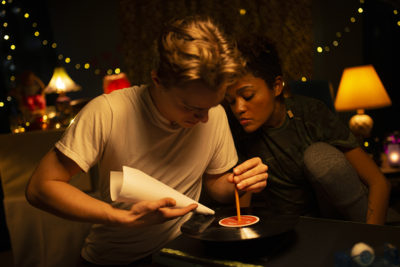
Give Me Liberty follows medical transport driver Vic, who risks his job to shuttle a group of rowdy seniors and a Russian boxer to a funeral, dragging clients like Tracy, a vibrant young woman with ALS, along for the ride. He’s late, but it’s not his fault. Roads are closed for a protest. The new route uproots his scheduled clients and as the day goes from hectic to off-the-rails, their collective ride becomes a hilarious, compassionate and intersectional portrait of American dreams and disenchantment.
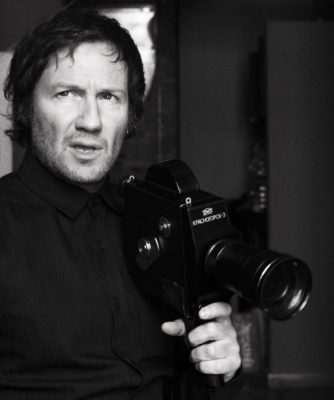
Q: Even though you do have some professional actors in the mix, you also cast many non-professionals. Where and how did you find all of this incredible talent?
A: “What’s very important, in the very beginning of this process—I don’t remember how it came about exactly—we knew we wanted very much to work with non-actors. On my first feature film [Sonhos de Peixe], I worked with non-actors in a small Brazilian fisherman’s village, and I knew from the very beginning that I would be writing that film for the people from that place. For me, it was a very successful experience. I really enjoyed working with them.
“With the kind of story we wanted to tell [with Give Me Liberty], we knew that we would benefit from having non-actors. Because the central character was a driver in Milwaukee who would be driving around a number of people with disabilities or people from just different walks of life, we just didn’t imagine at the time how we would gather the right professional talent from all over the nation, given our resources and given our task. So that was decided from the outset. It’s probably easier to write characters than to find them sometimes, so we were very excited at the end of the writing process. But when we looked at the characters, we understood that we had quite a task before us, because we needed to find extremely gifted people to portray these characters. Where we were going to look for them? We really didn’t know where to begin! In Milwaukee, we had obviously limited resources. Really, it was quite a daunting task.”
Alice is a successful playwright affiliated with the Goodman Theatre and Steppenwolf. She got in touch with someone in Chicago who referred us to an agency in Los Angeles, and almost instantly we found Lauren “Lolo” Spencer, who ended up portraying Tracy. We were absolutely blessed with her. That’s how that came about. Lolo portrays a character with a disability, and she does have a disability. We wanted to work with people who were not playing people with disabilities. We wanted to work with people who actually have disabilities, because we wanted to honor that side of life in this project in a way that was authentic. We felt very strongly about that.
For Victor, the main character, we had an eight month long odyssey. A couple of years ago, we had a
number of partners that were not a good fit for the project at the time, and someone proposed we try this one actor who almost looks like a real guy, like a non-actor walking in from the street, but he couldn’t do it, and then one thing led to another and before we knew it we were interviewing every living English-speaking actor on the planet between the ages of 18 and 30. I mean, we went through the whole cast of Dunkirk, it was insane! Then we looked around and thought to ourselves, “How did we get here? Didn’t we plan to work with a non-actor?” And luckily, luckily—we went so far as to propose the role to a couple of people, actors with faces and names—but luckily, thank God, for some reason things were turned down. They didn’t happen because, I don’t know, they were changing agencies or on the verge of “breaking out” and their agents advised them against doing a small movie in Milwaukee, etc. We just got lucky, my God, it’s just like the hand of God.

And so, eight months into the search, that’s when we had the chance of turning to Jen Venditti for help, who did a five-week search in the streets of New York. Jen ran into a young man in this baker’s shop in Brooklyn, who turned out to be quite interesting, and we met with him. He’d never had any training, but he ended up doing this role [Chris Galust]. We planned originally to give him two months to break in and drive the van and just live with some grandpa in Milwaukee and become this person. We ended up having only ten days [of prep] with him. The experience was quite brutal for him, because not only did we throw this little kid in the water, we expected him to swim faster than anyone else.
Each role is more complex than the other. But the role of Dima? He’s basically a fighter with a one-million-dollar smile, who walks into the room and just charms everyone. He has the physique of a boxer, boxer charisma, all the qualities of a person who would charm every member of the audience within five minutes. And being from a Russian, or Soviet, background. We just didn’t know where to turn.
All of a sudden, we were receiving headshots of metrosexuals from New York who just wanted to look tough with a three-day stubble but nothing else to show for themselves other than clearly going to the gym every day and mixing it with yoga. We realized we were never going to find this person. It was just impossible!
Until one day, a friend of ours, a casting director from Moscow, showed us this guy [Max Stoianov]. We saw his photo, we saw this smile, and before we even saw his videos we knew he was the guy. Incredible. His story is absolutely unbelievable. He is perfect. He possesses this animal charisma that translates into any culture, at least known to me. He is formidable physically. He is capable of working non-stop. I mean, it was a gift. It was basically love at first sight. I don’t want to just say we were lucky, but, yes, we were, because I don’t treat luck lightly. I think luck is a very particular energy that accompanies one. And in that sense, yes, of course, we were blessed, and that was another sign that the project was on the right track. And we really treasure it. We respect it. We understand that it’s a blessing and we’re trying to honor it with hard work.
Q: It’s so refreshing to see a movie set in an American city that isn’t Atlanta or Louisiana, or whichever state is currently offering the best tax incentives. In your four-year journey to get the movie made, was there ever a point in which forces were trying to talk you out of shooting in Milwaukee?
A: We stuck to our guns. We stuck to Milwaukee to a fault. Basically, it was inspired by Milwaukee—the
original stories and the place—so we really believed in making it in Milwaukee and only there.
Sometime later, about two-and-a-half years later, after many attempts to make it happen there, we
began to feel rather foolish [KM laughs] because Milwaukee wasn’t that keen on supporting us either
—that is to say there was no funding really available, there were no philanthropists, no funds supporting
cinema, no tax incentives. It was not easy. And people outside of Milwaukee couldn’t wrap their heads round Milwaukee either. Not a lot of people were excited at the thought of Milwaukee. But it is an interesting city in many respects. It’s the backbone of America. It’s a historical American city. It’s a segregated city with a lot of ethnic history that retains its authenticity in 2018, which can’t be said for a lot of cities in America. It has its own character, its own mood. Its seasonal changes. Everything is inspiring!
I believe Alice’s ancestor was the third white man in Milwaukee. I have my grandfather buried there, and one of my family members was born there, so it became an important town in my life. There’s a quiet beauty to it, which is not as obvious as, say, New York, for instance. Also, it just so happened that my family settled there at some point in the ‘90s. My first short film was made there—the one that took me on the road all over the world to make other films.
Would it be possible to make this film somewhere else? Yeah, absolutely. It would be another film. We really believed that by taking this particular film— inspired by my experiences in the city and written for Milwaukee by us together— anywhere else would have betrayed the spirit of the material. But what we have today is nothing short of destiny. We need to be practical, but we also cannot negate the spiritual side of this profession. We respect it a lot. We understand that things like inspiration, the metaphysical tissue of the matter, they’re important! In my opinion, based on my experience in this profession, to deny it, to not acknowledge that, would be foolish.
by Lamb L.
More than 40 years before RuPaul’s Drag Race, The Queen, the groundbreaking documentary about the 1967 Miss All-America Camp Beauty Pageant, introduced audiences to the world of competitive drag. The film takes us backstage to kiki with the contestants as they rehearse, throw shade, and transform into their drag personas in the lead-up to the big event. Organized by LGBT icon and activist Flawless Sabrina, the competition boasted a star-studded panel of judges including Andy Warhol and his superstars Edie Sedgwick and Mario Montez. But perhaps most memorable is an epic diatribe calling out the pageant scene’s racial bias delivered by Crystal LaBeija, who would go on to form the influential House of LaBeija, heavily featured in Paris is Burning (1990). A vibrant piece of queer history, The Queen can now be seen in full resplendence thanks to a new restoration from the original camera negative.
Producer’s Statement
HOW IT BEGAN by Si Litvinoff, Producer
After twelve years, I left my law practice at Barovick, Konecy and Litvinoff to concentrate on my hopes for film production. I had recently produced the Broadway play, Hail Scrawdyke, directed by Alan Arkin. Before that, while practicing law full time, I had co-produced several Off-Broadway plays such as Leonard Bernstein’s Theater Songs, Lonny Chapman’s Cry of the Raindrop, and David Belasco’s Girl of the Golden West, but I wanted to move on to film. I had already optioned novels like Anthony Burgess’ A Clockwork Orange, John Barth’s End of the Road, and Saul Bellow’s Henderson and the Rain King.
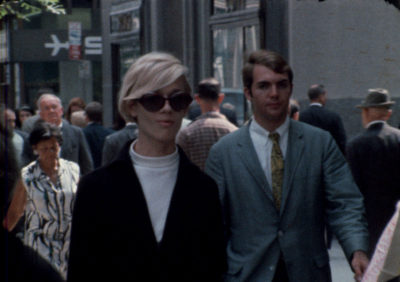
I had taken a suite of offices at 65 East 55th Street with one office designated for my friend and ex-law client, Terry Southern, who was now to be my partner in hopefully many film ventures. Terry had gotten hot as the screenwriter of Dr. Strangelove, The Cincinnati Kid, and The Loved One, amongst others.
One day, I received a phone call from the artist, Sven Lukin, and the cinematographer, Frank Simon, asking to see me ASAP. We met, and they described to me what was to be the 1967 Drag Queen Miss America contest at Town Hall in New York City, and would I be interested in producing a film documentary of the event? They showed me the formal printed announcement of the event. The event was sponsored by George Raft, Huntington Hartford, (the Woolworth heir,) and Edie Sedgwick, both of whom I knew. If that wasn’t enough, it stated “For the benefit of The Muscular Dystrophy Association of America; Mrs. Lyndon B. Johnson, Honorary Chairman.” It was described to me as “Ziegfeld’s psychedelic re-write of Helzapoppin’…a satirical happening.”

Obviously, I was hooked. It sounded outrageous and sensational. I asked Frank, who was to be the director and, Sven, who was to do sound, to arrange a meeting with the owners immediately, as the show was to be on very soon. I met Jack Doroshow. His Nationals Academy puts on these shows, and he also emcees in drag under the name of Flawless Sabrina. I liked Jack and we agreed on terms and I excitedly went back to my office and drafted a contract.
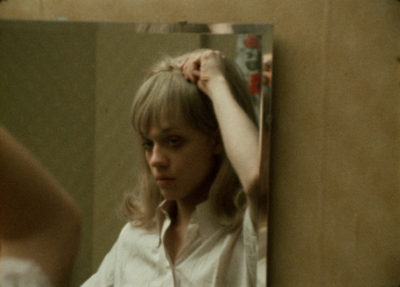
My first movie had come out of the blue and despite the fact that I knew people in Hollywood through my law practice, I was sure that Hollywood would not finance this project. Money was needed now for the Nationals, for raw stock, for equipment rentals, additional cinematographers, etc. I had another problem. I had never produced a film, let alone an independent film without the support of a Hollywood studio. I solved one problem by giving co-producer credit to a theater investor, who rented an office in my suite, in exchange for the front money I needed. Next, I phoned my friend, Lewis Allen who had produced an independent film of the play The Connection, (written by my former law client, Jack Gelber and directed by my former law client, Shirley Clarke,) to see if he would produce it with me. He excitedly agreed and provided his recent knowledge and more investors. Thanks to The Connection, he had gained relationships and credit all over town. Terry was excited and wanted to be an interviewer and judge. He got our friend, the artist Larry Rivers to also serve as both interviewer and judge. Another interviewer was Jay Presson Allen, Lew’s wife, the playwright and screenwriter of The Prime of Miss Jean Brodie, Hitchcock’s film, Marnie, Cabaret, Funny Lady, etc… We also got Bernard Giguel, the US head for Paris Match do interviews. I then set out to get the rest of the judges. I contacted former law clients. Artists, Andy Warhol, Jim Dine, rock legend Jerry Leiber, authors Bruce Jay Friedman and George Plimpton all agreed to be judges. Frank got a crew together.
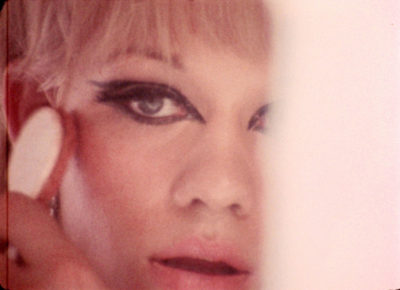
Rehearsals and the show itself were marvelous and Frank captured it all. When I saw the rough cut, I decided that though it was not the convention, the film flowed better without seeing the interviewer asking the question but with just the answer. Lew and Jay agreed. We made a distribution deal with the publisher, Grove Press, which had established a film division and was enjoying a successful start with I Am Curious (Yellow).
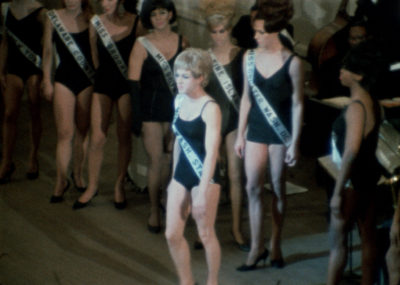
The film opened at the Kips Bay Theater in New York City to unanimous rave reviews and broke box office records and did the same all over the country. It was invited to screen at the 1968 Cannes Film Festival. Roman Polanski, in his autobiography “Roman,” referred to it as “the toast of Cannes.” He and fellow jury member Truman Capote had intended to award it a special jury prize, but unfortunately, the festival ended after one week when the entire country of France went on strike.
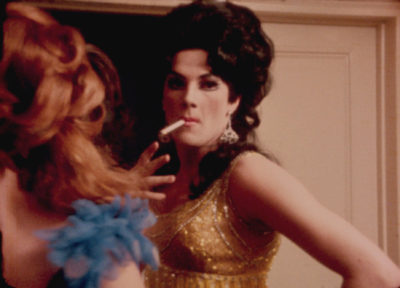
“[A] riveting chronicle of a 1967 drag competition.” – Melissa Anderson, The Village Voice
“A gutsy, funny… really very moving documentary.” – Roger Ebert, The Chicago Sun-Times
“Makes gender itself seem like an urgent performance.” – Richard Brody, The New Yorker
“Extraordinary.” – Renata Adler, The New York Times
by Lamb L.
After Alfonso Cuarón won the Best Director Oscar for Roma in February, people began pointing out that the Academy had given the award to a Mexican filmmaker in five out of the last six years, a remarkable turn of events. (Cuaron won once before, for Gravity, Alejandro Iñárritu twice for Birdman or (The Unexpected Virtue of Ignorance) and The Revenant and Guillermo del Toro once for The Shape of Water.) In the coming weeks at the Royal we’ll be showcasing even more cinematic talent from Mexico with two terrific new movies: we’ll open Our Time [Nuestro Tiempo] on June 28 and The Chambermaid [La Camarista] on July 5, both at the Royal in West L.A.
In Our Time, a family lives in the Mexican countryside raising fighting bulls. Esther is in charge of running the ranch, while her husband Juan, a world-renowned poet, raises and selects the animals. Although in an open marriage, their relationship begins to crumble when Esther falls in love with an American horsebreaker and Juan is unable to control his jealousy.
From the moment he arrived on the film scene seventeen years ago with his debut feature Japón, Reygadas has been the complete package: a mature and accomplished artist who is both contemporary with countrymen Cuarón, del Toro, and Iñárritu and operating on his own plane – earning his place as “the one-man third wave of Mexican cinema.” His previous films include Silent Night (2007) and Post Tenebras Lux (2012), awarded the Jury Prize and Best Director at Cannes Film Festival. Armed with a full arsenal of aesthetic and narrative tools and persistently fearless in their realignment, he has consistently traversed new cinematic territory for himself and within movie history.
Writing in Sight & Sound, Giovanni Marchini Camia called Our Time “a soul-searching work of scorching honesty that functions both as an anatomy of love and marriage, and as an evisceration of masculinity.”

In her feature film debut The Chambermaid, theater director Lila Avilés turns the monotonous work day of Eve (Gabriela Cartol), a chambermaid at a high-end Mexico City hotel, into a beautifully observed film of rich detail. Set entirely in this alienating environment, with extended scenes taking place in the guest rooms, hallways, and cleaning facilities, this minimalist yet sumptuous movie brings to the fore Eve’s hopes, dreams, and desires. As with Cuarón’s Roma, set in the same city, The Chambermaid salutes the invisible women caretakers who are the hard-working backbone of society. – New Directors/New Films

New York Times co-chief film critic called The Chambermaid “sublime [with] moments of beauty, tenderness and freedom [that] provide flickers of humanity that feel almost miraculous.”

Further acclaim for The Chambermaid:
“Possessed of a deadpan wit and downplayed humanistic warmth… and a poised lead performance by Gabriela Cartol. It will mark Avilés as a name to watch.” – Jonathan Romney, Screen International
“Funny and playful… Nuanced and natural, it has a quiet and modest power as it comments on the ironies of contemporary cities like Mexico City and their growing economic divide.” – John Fink, The Film Stage
“Winningly grounded. A compassionate tribute to Mexico’s anonymous laboring classes.” – John Hopewell, Variety
“Formally confident and technically polished. Avilés is an exciting find.” – Dan Sallitt, MUBI
by Lamb L.
Moshe Rynecki was a prolific Warsaw-based artist who painted scenes of the Polish-Jewish community until he was murdered at the Majdanek death camp. After the Holocaust, Moshe’s wife was only able to recover a fraction of his work, but unbeknownst to the family, many other pieces survived. For more than a decade his great-granddaughter has searched for the missing art with remarkable and unexpected success. Spanning three generations, Chasing Portraits is a deeply moving narrative about art, war, and one woman’s unexpected path to healing.
Chasing Portraits is a wonderful film and we are thrilled to share it with Los Angeles audiences. Learn more at EatDrinkFilms.com, where filmmaker Elizabeth Rynecki published an essay. There is also an excerpt from her book of the same name.
Ms. Rynecki will participate in Q&A’s following the 7:30 pm shows on Friday, 5/17 through Sunday, 5/19 and after the 3:10 pm show on Sunday at the Music Hall.
by Lamb L.
In late 19th century rural Vietnam, fourteen-year-old May is given away in an arranged marriage and becomes the third wife to her older husband. She learns that she can gain status and security if she gives birth to a male child and this becomes a real possibility when she gets pregnant. However, her path is fraught with danger when May develops an attraction for Xuan, the second wife. As May observes the unfolding tragedy of forbidden love and its devastating consequences, she must make a choice: to either carry on in silence and safety, or forge a way towards personal freedom.
Ash Mayfair’s debut feature signals the emergence of a young female writer-director whose aesthetic sensibilities, cinematic language and extraordinary ability to illuminate the past will captivate audiences.
Praise for The Third Wife:
“Aesthetically entrancing…sensitively poetic….” –The Hollywood Reporter
“Ash Mayfair’s supremely atmospheric feature debut explores repressed desires against the resplendent but emotionally suffocating landscape of late-19th century rural Vietnam. Telling the story of a young girl who enters an arranged marriage to a landowner, The Third Wife echoes the ravishing art-house triumphs of Tran Anh Hung, who serves here as an ‘artistic advisor’, while his wife and frequent collaborator Tran Nu Yen Khe plays one of the principal roles. Yet Mayfair acquits herself in such confident fashion that her sensuously elegant drama isn’t at all hindered by the inevitable comparisons.” –Screen Daily
“Debut director Ash Mayfair delivers a gorgeously intimate, evocative, and melancholy story of female subjugation in 19th-century Vietnam. By focusing with unwavering empathy on the interior life of teenage bride May (Nguyen Phuong Tra My), the remarkable The Third Wife feels newborn and ineffably modern. Winner of prizes at both the San Sebastian and Toronto festivals, this is the rare debut that derives its freshness not from inexperience but from a balance between compassion and restraint that most filmmakers take decades to achieve.” –Variety
DIRECTOR’S STATEMENT: The Third Wife is inspired by the history of my family. It is a coming-of-age story, a tale of love and self-discovery in a time when women were rarely given a voice.
The themes of women’s sexuality, the growth from childhood to adulthood and the individual’s struggle within a conservative patriarchal society have always fascinated me. I grew up in Vietnam, a society that held traditions, history, and community to be more valuable than personal independence. The heroine of this story embarks on a journey where her identity must assume many roles, that of a child, a woman, a wife, a lover, and eventually a mother.
The men and women in my script are all drawn from real people, connected to the rural landscape of the country. The story, although fictitious, is a tapestry woven from many true events. Both my great-grandmother and my grand-mother had arranged marriages at a young age. My great-grandmother lived in a polygamous marriage from when she was a teenager until the end of her life. The history of arranged marriages is deep-rooted and I was drawn to the subject not only because of my familial heritage but also because this is unfortunately a practice that still exists in several countries in the world.
The themes of sexuality and sensuality in the film therefore had to be handled delicately. Nevertheless, I did not want to shy away from portraying what would be emotionally truthful. May’s desire for Xuan, coupled with her pregnancy and the shock of living in such a circumstance at a very young age would naturally force her to grow beyond her years. May’s wedding night and the rituals involved stemmed from ancient Vietnamese traditions brought to my attention by the actors themselves during the rehearsal period. I was fortunate to have had a very sensitive and mature actress in the leading role who understood the demanding nature of the part, whose family was also extremely supportive. May’s journey in the film became much richer because my actress was able to give the character her own emotional resonance, bringing her personal understanding and sympathy to the story. Within the socio-political background of the period, I felt that it was important to address the subject matter of love and desire with as much candor as possible. It is not my intention to portray these women as victims. Rather, May is a soul capable of so much more than the roles prescribed to her by society, not unlike the fates
of many women in our present time.
As a child, tales of incredible circumstances involving birth and death, child rearing, living as a concubine and the ensuing consequences, lost love and found comfort, were the wellsprings that nourished my imagination. When we embarked on the journey to make this film five years ago, I found that many people I talked to during my research and preparation have lived through similar experiences or have had family members with nearly identical fates to my characters. During the making of the film, it was important that the cast and crew understood the way life was in a very intimate way. I held long improvisational rehearsal periods when the cast would live and interact in costumes and in characters. The set was designed in a way that was historically exact and each of the separate spaces in the manor would provide a completely immersive experience for the actors. I lived on set for several weeks during the rewrite of the script in order to properly absorb the feeling of the landscape. During rehearsals, I worked with the cast very closely on every aspect of their characters, using historical research, literature, painting and music to inform ourselves of the thought process of people in the period. I was lucky to have grown up in a land enriched by a prominent history of folklore. The oral tradition of Vietnamese art and literature has given me a deep appreciation for the musicality of the language whose poetic sensibility I hope to bring forward in the film.
In terms of aesthetics, the visual choices of The Third Wife are largely informed by the landscape and cultural traditions of northern Vietnam, the birth place of my great grandparents. Nature is a dominant symbolic force closely tied to spirituality and religion. People’s lives and habits were informed by the movement of the sun and the seasons. It was therefore important to portray this using as much natural light as possible. Our Director of Photography went through a lot of experiments using live fire for lighting during night time scenes because I did not want any artificial feeling to permeate the frame. Consequently, The Third Wife has a painterly approach to cinematography. The stillness of most of the composition comes from the desire to make every frame as close as possible to a
watercolor painting.
As an artist, I believe that The Third Wife is a story that needs to be told not just because it is deeply personal to me but also because the themes explored and the lives unfolded carry universal significance. Being separated from a loved one is devastating for men and women of any decade. The struggle between an individual’s desires and the duty owed to one’s family affects people of every class, race and gender. Girls and women everywhere still suffer from a lack of education and professional opportunities, even in modern, developed societies. I became a filmmaker because no other medium has given me as efficient a way to reach out and connect with others. The beauty of the screen for me is not only escapist
but also transformative. This film will have moments that are blunt, uncomfortable, harrowing and painful. However, I hope that it will also be forgiving, generous, humorous, loving and sensual, much like the many lives I have had the privilege to witness. ~ Ash Mayfair
Ash Mayfair was born and grew up in Vietnam. She received an MFA in filmmaking from NYU. Ash’s short films, The Silver Man, Sam, Heart of a Doll, Grasshoppers, Lupo, Walking the Dead, and No Exit have been shown by numerous international film festivals. The Third Wife is her first feature film. The screenplay won the Spike Lee Production Fund 2014 and was on the NYU Purple List 2015 for the best screenplays written by graduates. The Third Wife also won the Grand Prix at Autumn Meeting Lab 2015 in Vietnam and the Best Award for a non-Hong Kong project at the Hong Kong Asia Film Financing Forum 2016. In 2017, the project was also among the 10 films selected to be presented at IFP (Independent Filmmakers Project) in New York.
by Lamb L.
CHARLIE SAYS screenwriter Guinevere Turner will participate in a Q&A on Friday, 5/10 at NoHo, and on Saturday, 5/11 at the Monica following the 7:30 pm shows.
by Lamb L.
FAST COLOR writer-director Julia Hart and star Gugu Mbatha-Raw (BELLE, A WRINKLE IN TIME, BEYOND THE LIGHTS) will participate in a Q&A after the 4:10 PM screening at the Laemmle Glendale on Sunday, April 28 and after the 4 PM screening at the Laemmle NoHo on Saturday, May 4.
